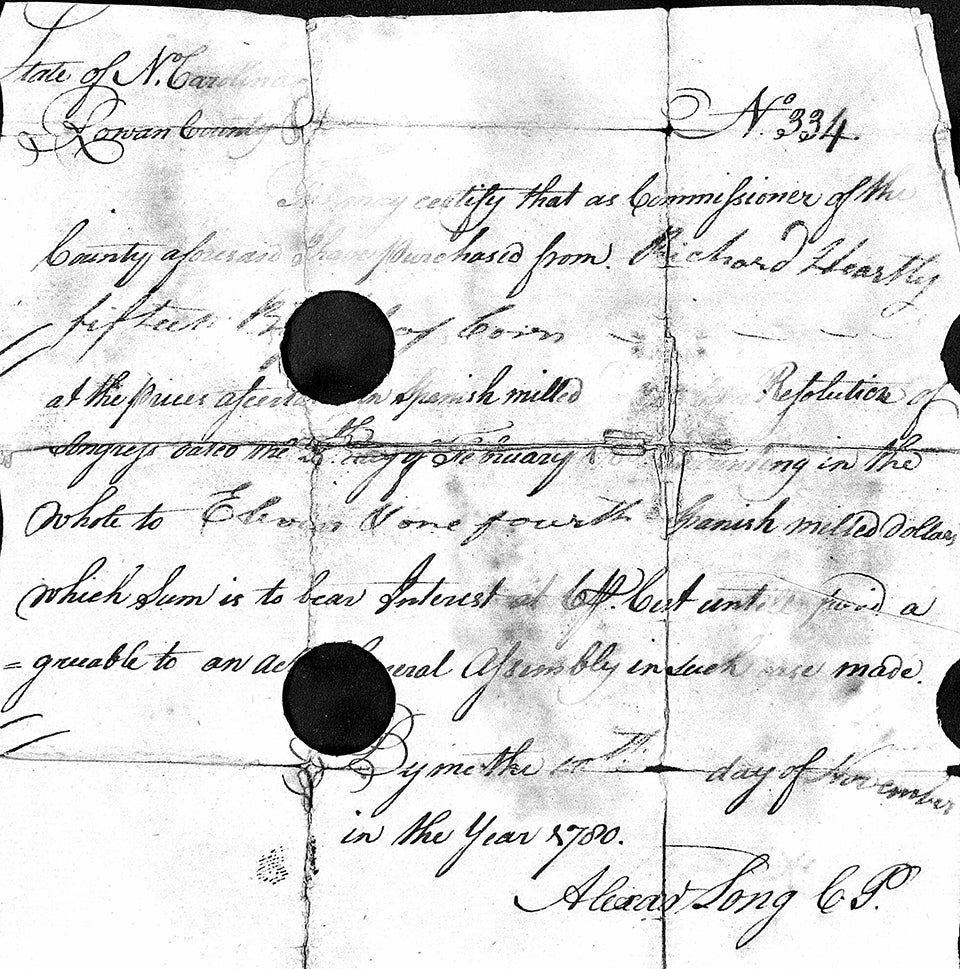The Literary Corner: Renegade Writer’s Guild
Published 11:20 am Tuesday, March 19, 2024
|
Getting your Trinity Audio player ready...
|
Richard Heartley, Patriot
By Linda H. Barnette
Richard is 8 generations back from me. He was the first ancestor on my dad’s side of the family who settled in Rowan County in the late 1700s. He lived in the area of Rowan that became Davidson County in 1822.
He and his wife Abigail came here from Snow Hill, Md. and lived in the area of the Jersey Settlement, close to the current town of Linwood. They had numerous children, one to whom I can directly trace my lineage. According to the record book of the Jersey Baptist church in the Rowan County Public Library, they were both members of that congregation. No record of their burial exists, but like most people in those days, they were likely buried on their farm.
Based on several records that I have located, Richard was a Revolutionary War Patriot. In Linn’s Rowan County Tax list 1757-1800, page 160 he was a constable at the Salisbury jail during the war and guarded Tory prisoners there. The DAR Descendants Database says the same thing but uses the old English word “goal.” DAR also gives the date of his death as 1784.
In 1778 Richard claimed “300 A. on Potts Crk. Adj the improovements of John Hunt, Zebulon Beard, Joseph Smith, and James Curry, including his own imporoovements.” This claim, which might have been his land bounty for his service in the Revolution, is listed in the Rowan County Vacant Land Entries, 1778-1789 and is dated August 29, 1778.
In addition to working at the jail, he also sold goods to the Loyalists during the war. I found 2 examples of this during my research, both dated 10 Nv. 1780, saying that the commissioners for Rowan County had purchased “oats at the prices ascertained as Spanish milled dollars…” Supplying the army with good was also considered a patriotic act.
As noted earlier, Richard had several male heirs to whom he left property. My line is that of Thomas Heartley, my 4th great-grandfather, who is buried at Sandy Creek Lutheran Cemetery in Davidson County, in the same place where 5 generations of my family are buried. Unfortunately, I cannot documentarily prove my relationship to Thomas, but starting with him, I can prove all of the generations down to myself.
Pictured is a not very clear copy of Richard’s Revolutionary War voucher, a receipt for goods.
Hookah
By E. Bishop
The Yadkin Valley Magazine has always been a favorite of mine to read with its spotlight on local people and businesses. Also, I loved the recipes and the section to look for the “what is it”? So glad someone has taken up the challenge to continue this magazine. The “what is it?” section must have been really popular, and I suppose still is. I had submitted an item; received a letter back that they had a backlog of things to consider and didn’t know if they would get to mine, so here it is.
My older sister, Betty, and her husband, Frank, love to go antiquing, looking for anything old to add to their collection which they have housed in a one- room cabin behind their house. On one such excursion, their usual antique/yard sale dealer had an unusual looking item. No one knew what it was. The man asked Frank to help him figure out what it was and what it might have been used for.
After some research, it was determined that the item was missing a part or two. Consideration given to that fact, it made it easier to figure out that this item used to be a hookah pipe (or hubble the bubbles). According to the Amsterdam Pipe Museum (The Worldwide Collection of Smoking), “the hookah takes a special place among smoking utensils; today it is one of the most popular and is known all over the world. The use of a reservoir filled with water to cool the smoke is an ingenious invention, suited to life in a warm climate. The system is relatively simple. The bowl has a stem that ends in a bottle filled with water. Above this reservoir is a second stem or hose that goes to the smoker’s mouth. When drawn from the mouthpiece, it makes a vacuum into the bottle, drawing fresh smoke from the smoldering tobacco through the water. Hookahs are of Ottoman origin and are known by many names.” The museum website was very informative.
An interesting piece of antiquity to find even though missing a few parts. You never know what you may find looking through someone else’s junk, and you may learn a little history along the way.





